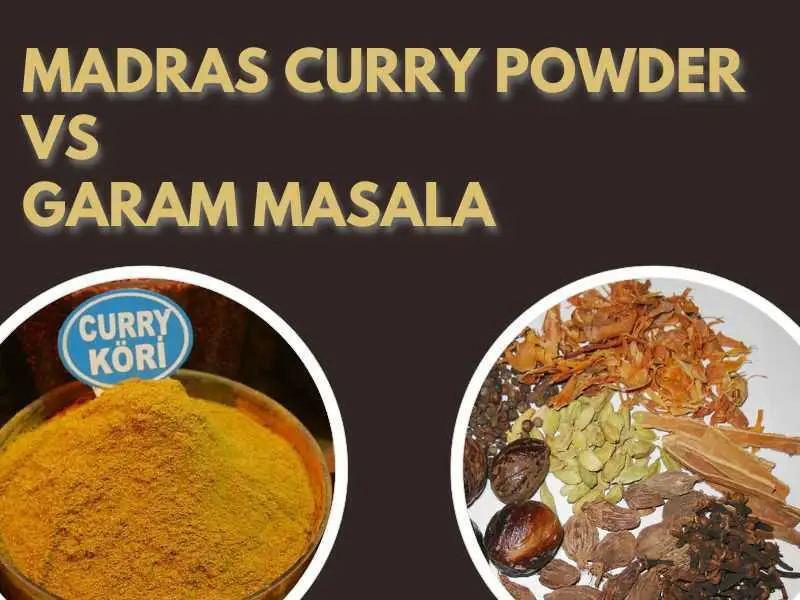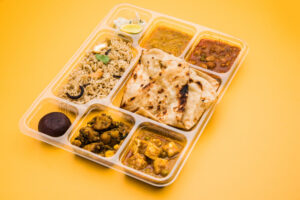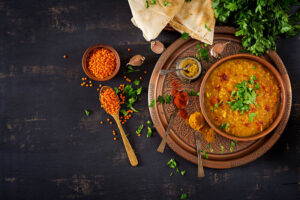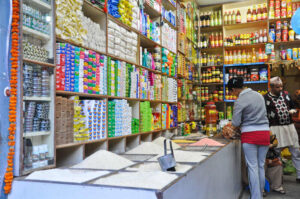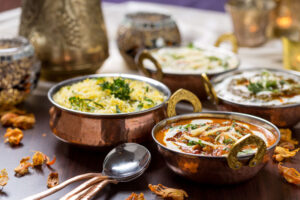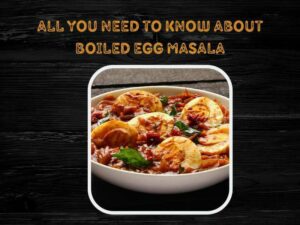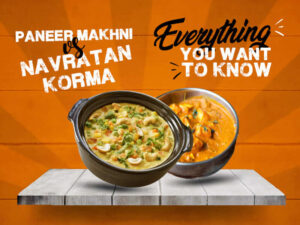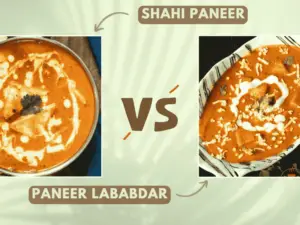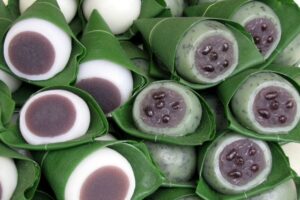Madras curry powder and garam masala are popular spice blends used in Indian cooking. However, they are not the same thing. In this article, we will explore 13 things you need to know about them.
Madras curry powder vs garam masala; keep reading to find out more.
Garam Masala Is Sweeter Than Madras Curry Powder
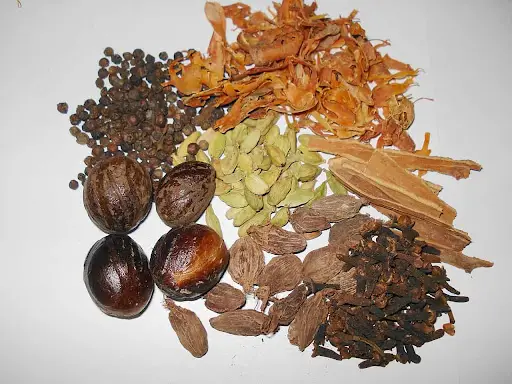
Although we wouldn’t necessarily label it as a ‘sweet’ blend, the addition of cinnamon makes it sweeter than madras curry powder which is tangy and earthy.
There are many spice blends on the market, such as the best shahi paneer masala brand, which you can find out about by following this link.
The Name Madras Derives From The City of Chennai
The city of Chennai was once known as Madras, which is where this potent curry powder gets its name. It is also worth noting that madras curry powder, along with regular curry powder, is British. In fact, the first madras curry powder product was sold in Leicester Square during the 19th century.
The reasoning behind this is that during the British ruling in India during the 18th century, the British were such a fan of Indian cuisine that when they took trips around the world, they would often take curries with them. They would also take Indian workers with them on such trips who would cook these Indian meals for them using local ingredients that were similar.
Madras Curry Powder is Spicier Than Garam Masala
Madras curry powder contains Kashmiri red chilies, which is why it is much spicier than garam masala. However, that’s not to say it is the spiciest masala blend. Durban curry masala, for example, is a super spicy blend as it contains both chilli powder and hot pepper powder. However, this dish is more popular in South African regions.
Why not take a look at this article on garam masala vs ras el hanout.
Garam Masala Means ‘Warm Spice Mix’
Garam masala originated in Northern India where it is much colder in the winter months than other areas. This spice mixture was and still is important in Indian cooking as locals used it in their meals to literally keep warm.
Garam Masala is one of the most popular spice blends that is widely used in Indian cuisines. At Shivani's Kitchen, We call this spice blend the "Queen of the Pantry"! Can you guess why? pic.twitter.com/1mHpsHKbN3
— Shivani's Kitchen (@Shivaniskitchen) May 20, 2021
Madras Curry Powder vs Garam Masala: Both Offer Great Health Benefits
Spices, in general, are known to boost immune systems and aid weight loss. After all, they are natural, plant-based products.
Turmeric, for example, is known for its anti-inflammatory properties, while cumin is thought to fight off bacteria. Black pepper is high in antioxidants and may contain cancer-fighting properties, while chillies may boost metabolism and provide pain relief.
So the next time you’re tucking into your favorite Indian dish, you’re also taking care of yourself!
Madras Curry Powder vs Garam Masala: The Former Is Brighter
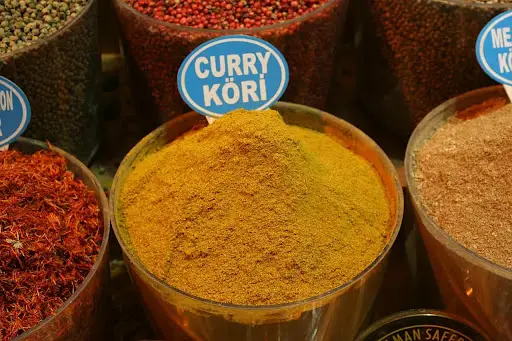
The color of curry powder is usually more vibrant than most spice blends. When it comes to madras vs garam masala, the former is the only mix that contains turmeric, and that is what gives a madras curry its yellow tinge.
Garam Masala vs Madras Curry Powder: The Spices Used In Each Blend
Let’s take a look at the breakdown of spices used in each blend.
| Garam Masala | Madras Curry Powder |
| Coriander seeds | Coriander seeds |
| Cinnamon | Turmeric |
| Black pepper | Whole black pepper |
| Green cardamom seeds | Green cardamom pods |
| Cloves | Curry leaves |
| Cumin | Whole cumin seeds |
| Nutmeg | Fenugreek seeds |
| Ginger | Kashmiri red chilies |
So, in the madras curry vs garam masala comparison, it is clear to see that madras curry powder contains more whole spices than garam masala. Whole spices are much more flavorful and fresh than ground products. They can also last for twice as long.
Madras Curry Powder vs Garam Masala: Adding Them To A Dish
Curry powder, in general, is usually added to a dish in the beginning stages. Once the onions, ginger, and garlic have sauteed for a few minutes, it’s time to add the curry powder. Cooking the spices for 1 to 2 minutes will release that pungent flavor we all know and love.
Garam masala can be added at any point. Some like to add in early on to toast the spices. Some prefer to add it at the end, even sprinkling a dish when it is ready to be eaten at the table!
Garam Masala: How To Make It Yourself
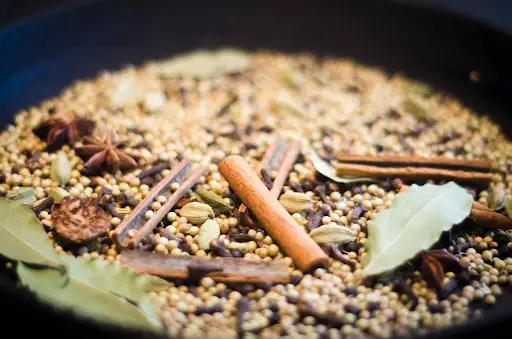
Contrary to belief, garam masala isn’t just a mix of any old spices. It is a unique blend of 3 types which are: aromatic, smoky and earthy.
Ingredients
1 cup coriander seeds
4 tsp cumin seeds
3 black cardamom pods (not seeds)
1 cinnamon stick
2 tsp black peppercorns
2 bay leaves
6 cloves
1 star anise
10 green cardamom pods (not seeds)
Method
- Place a skillet over medium heat.
- Once hot, add the spices (do not add oil) and saute until the smell of the spices begins to fill the room. Once this happens, the spices are toasted.
Top tip: Do not overcook the spices as they will burn. A good rule of thumb is to toast them slightly until the aroma fills the air and remove them from the heat immediately.
Now comes the fun part! Once the spices have cooled, you will need to grind them into a fine powder. This can be done with a spice grinder if you have one. If not you can use a good old-fashioned pestle and mortar.
Is Garam Masala the Same as Madras Curry Powder?
As discussed above, garam masala and madras curry powder are not the same. Although they do contain some of the same spices, they also contain different ones that set them apart.
What is the Difference Between Madras Curry and Garam Masala?
The main difference is the level of spice. Madras curry powder contains Kashmiri red chilies which give it that added heat.
Can I substitute Garam Masala for Madras Curry Powder?
Yes, you can make this substitute either way around. The finished product may taste slightly different than usual but it won’t be too obvious.
Can I use Garam Masala instead of Curry Powder?
Yes, there is nothing wrong with using one as a substitute for the other. The only difference you may notice is the spice factor, but this can be adjusted by adding some chopped green or red chilies.
For more information about curry vs masala, click here.
